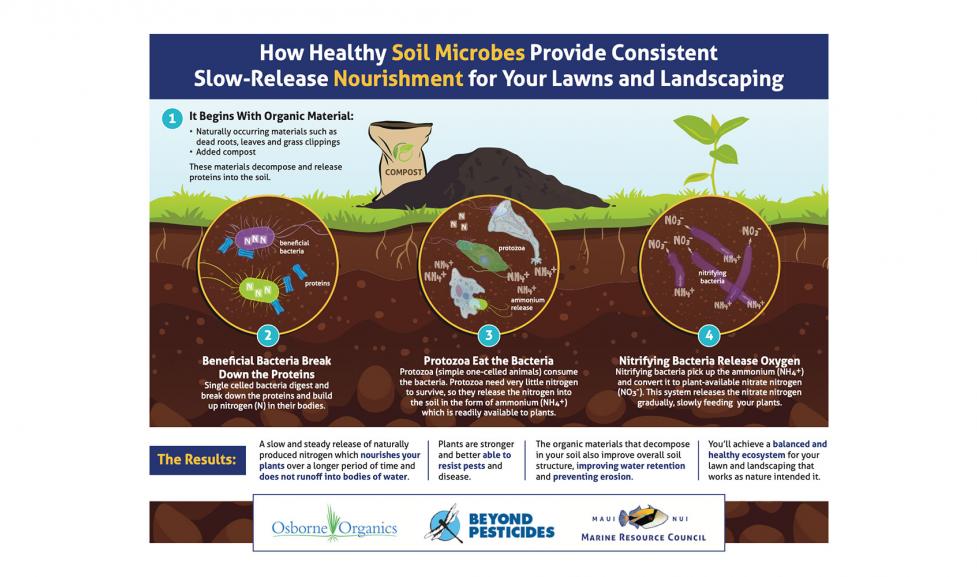How Healthy Soil Microbes Can Benefit Your Lawn and Landscape
- by
- Gene Caballero
- September 09, 2022
One of the most overlooked aspects of a lawn's health is the microbiome that supports your grass which is nearly unseen. Beneficial fungi, bacteria, and even viruses can help exchange nutrients from the soil to your grass. This infographic does a great job of breaking down some of the benefits that microbes have for the soil. Let's dive in!
What feeds beneficial soil microbes?
Naturally occurring materials known as humus can feed and house your natural soil microbiome. Humus is an essential organic material such as rotting roots, leaves, or branches that break down and feed the soil. This is one of the reasons that top-dressing your lawn with compost regularly is essential for its healthy growth. Even grass clippings are a great natural compost, so consider mulching your grass or using the clippings to make compost.
What do beneficial bacteria do?
Beneficial bacteria in your soil help to break down the humus and naturally occurring elements in your lawn, They can even help chelate nutrients. This means they help your plants absorb the nutrients abundantly available in your lawn. Unfortunately, chemical fertilizers can kill these beneficial creatures.
What do protozoa in the soil do?
Protozoa eat the bacteria that form and they release nitrogen into the soil, but your plants can’t use it yet.
What do nitrifying bacteria do?
In your soil, some species of bacteria pick up the ammonium left by protozoa and convert it into nitrate nitrogen which is a bioavailable form of nitrogen for your plants.
Your lawn's tiny friends (microbes) eat dirt, unlock nutrients, and make your grass happy. Skip chemicals, feed them compost, and enjoy a healthy, green lawn!
At the end of the day, you can see just how beneficial these naturally occurring bacteria are. Unfortunately, chemical fertilizers can cause the soil to become sterile which leads to less bioavailable nutrients in the soil.
This infographic was brought to you by Beyond Pesticides. Be sure to check out our lawn care blog for more great info on keeping your lawn healthy!
Powered by Froala Editor











